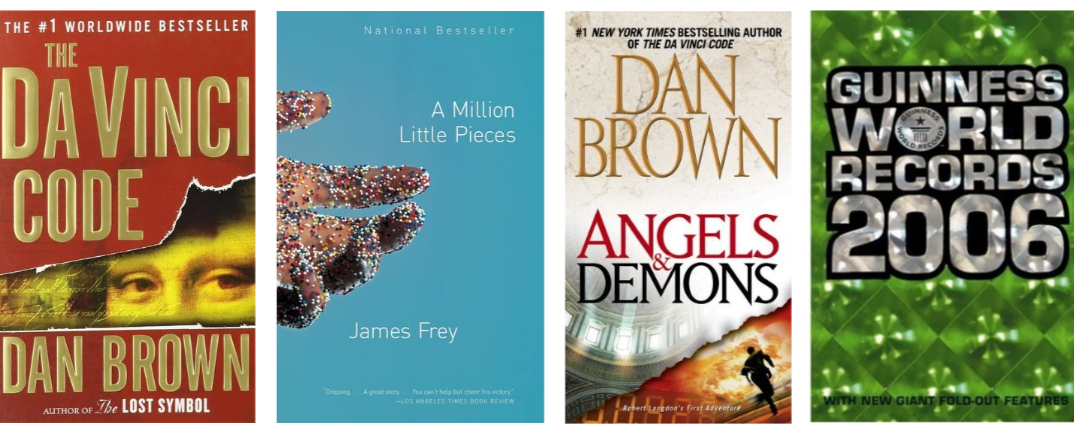Canadian readers want a wide and diverse book offering, and while there’s still a lot to do regarding the representation of marginalized communities across all subjects, it’s also true that there’s work to do in finding available books about diversity and/or by diverse authors. These books are not easily discoverable by interested readers or booksellers. Using incorrect or insufficient metadata is part of the reason — if not the reason — why these books are not ending up in the hands of readers.
So join us as we summarize what we learned in July’s webinar led by EDItEUR’s Chris Saynor and hosted by BookNet Canada’s standards guru Tom Richardson, where Chris shares effective ways data senders can use ONIX and Thema to their advantage and boost the discoverability of diverse Canadian titles. (If you’re more of a visual and auditory learner you can skip this part and jump to the recording of the presentation which can be found here.)
Why ONIX & Thema?
As you might know, ONIX for books is a standard used in the industry to “support computer-to-computer communication between parties involved in creating, distributing, licensing or otherwise making available intellectual property in published form, whether physical or digital.” Basically, if there’s something a publisher wants to communicate to another party involved in the supply chain, they should include it in their ONIX feeds. Why, you ask? Because the more information the publisher includes the more likely those books are to be discovered and bought. Of course, the key here is to not only provide lots of data but more importantly, to include what is truly relevant. By relevant data, we mean that in a market that is keen to embrace diversity, inclusion, and a more wide range of authors, data might play a critical role in whether or not the right books get to the hands of the readers or if instead they stay in warehouses.
Now, about Thema. Thema is a subject category scheme widely used in markets outside of North America — us Canadians and our US counterparts still haven’t embraced Thema at its fullest. One of the reasons for this lack of use is because of the belief that Thema qualifiers have the same capabilities and purpose as the BISAC codes. Which is not true. On the contrary, unlike BISAC, Thema allows merging multiple qualifiers that together will have a richer meaning. When used correctly, they can complement BISAC codes and become the perfect combo that along with your excellent ONIX metadata will help to make your books easier to find.
What’s in it for publishers?
Short answer: opportunities. By using Thema qualifiers that reflect the details of the titles you’re hoping to sell, along with the use of ONIX composites that communicate all the information booksellers and book buyers might ask themselves when looking for books or making purchasing decisions you can gain opportunities to sell more books. These questions can be related and not limited to:
if a book is by or about certain groups/communities;
if the story takes place in a specific region/country;
information about the books' contributors: their country of origin/languages spoken/race/sexual identity;
the type of narrative;
the audience for which the book is intended;
the ways the book is being promoted: signing events/author readings; and
if it’s a large print, multilingual edition, highly readable edition, bilingual edition, etc.
Now that we've got your attention, allow us to explain in more detail the ways in which you can start enhancing your metadata and ultimately sell more books!
Language
It’s no surprise that Canada’s multicultural population is often bilingual, multilingual, and/or have a first language other than French or English. As consequence, we’re fortunate to have books published in multiple languages, and not only for educational purposes.
When working on your metadata, here are some things you can take into account to incorporate language as a tool to drive discoverability:
through your ONIX feeds you can share with data receivers whether the book is available in multiple languages, what those languages are, and if the title has been translated;
when language is the subject of the book — for example, a book in English about the origin of the French language or a dictionary — Thema qualifiers should be included.
Here's an example of the metadata for a book about the Inuktitut language:
Sample of Thema
YBLA – Early years: letters and words
YPCA1 – Educational: First / native language: Basic literacy
2JNBK – Inuktitut / Inuktut
4Z-CA-A – For Elementary Education (Canada)
5AD – Interest age: from c 4 years
Sample of ONIX
<EditionType>BLL</EditionType>
<Language>
<LanguageRole>01</LanguageRole>
<LanguageCode>iku</LanguageCode> <!-- Inuktitut -->
<ScriptCode>Cans</ScriptCode> <!-- Unified Canadian Aboriginal Syllabics -->
</Language>
<Language>
<LanguageRole>01</LanguageRole>
<LanguageCode>iku</LanguageCode> <!-- Inuktitut -->
<ScriptCode>Latn</ScriptCode> <!-- Latin -->
</Language>
<Language>
<LanguageRole>01</LanguageRole>
<LanguageCode>eng</LanguageCode> <!-- English-->
</Language>
Here's an example of the metadata for a children’s book that isn't about the language, but instead written in Inuktitut:
Sample of Thema
YBLL – Early years: nature and animals
YNNJ2 – Children’s / Teenage general interest: Large land mammals
YNNB9 – Children’s / Teenage general interest: Wildlife and habitats: Ice, snow and tundra
5AC – Interest age: from c 3 years
Sample of ONIX
<EditionType>BLL</EditionType>
<Language>
<LanguageRole>01</LanguageRole>
<LanguageCode>iku</LanguageCode> <!-- Inuktitut -->
<ScriptCode>Cans</ScriptCode> <!-- Unified Canadian Aboriginal Syllabics -->
</Language>
<Language>
<LanguageRole>01</LanguageRole>
<LanguageCode>iku</LanguageCode> <!-- Inuktitut -->
<ScriptCode>Latn</ScriptCode> <!-- Latin -->
</Language>
<Language>
<LanguageRole>01</LanguageRole>
<LanguageCode>eng</LanguageCode> <!-- English-->
</Language>
Contributor
Before fully diving into the Contributor composite, let’s tie language in here, too. Language is present in most descriptor fields in ONIX, including Contributor Description. Having descriptions of the contributor in multiple languages will increase the chances of books of getting discovered — especially in a time when algorithms and search engines determine what's relevant and what isn’t.
<ContributorDescription language="fre">Poète, nouvelliste et romancière, Marie-Célie Agnant est née en Haïti et habite au Québec depuis 1970.</ContributorDescription>
<ContributorDescription language="eng">Marie-Célie Agnant is an occasional storyteller, a writer of poems, novels and novellas, born in Port-au-Prince, Haiti and has lived in Quebec since 1970.</ContributorDescription>
<ContributorDescription language="esp">Marie-Célie Agnant, escritora haitiana afincada en Quebec desde 1970 es autora de poemas, novelas y relatos cortos, también es cuentacuentos ocasional.</ContributorDescription>
<ContributorDescription language="hat">Marie-Célie Agnant se yon fanm ekriven kebèkwaz (Kanada) orijinè Dayiti.</ContributorDescription>
Back to contributors. As BookNet Canada’s Noah Genner suggests in his article, Canadian authors: The whys and hows of identifying them in your data, good Canadian contributor metadata has an impact on discoverability, sales, accuracy in attribution, and research. Part of the beauty of ONIX 3.0 is that it also allows for specifying the regions and countries where the author is from, where they currently reside, where they worked, and so on (see ONIX code list 151). Again, all this is useful information that can lead to higher chances of a title getting discovered.
Another ONIX attribute that directly impacts discoverability is the biographical note. This attribute offers an opportunity to introduce the author/contributors to the data receivers. It’s important to emphasize that having the contributors' consent and even their help on how they would like to be positioned to the public is very important. Not making assumptions about gender identity, preferred pronouns, origin, or ways the author wishes to be described are key to not just accurately portraying that individual but to also reach their intended market.
Remember when we said that Thema is meant to complement ONIX? Well, Thema offers a wide range of qualifiers that can help classify books by gender identity, origin, and more. Below is an example of Thema qualifiers suggested for What Makes you Beautiful by Bridget Liang, a book that touches on Bridget’s own experience as a queer, transgender, autistic, and disabled person.
YXB – Children’s / Teenage personal and social topics: LGBTQ+
YXC – Children’s / Teenage personal and social topics: Gender identity
YXD – Children’s / Teenage personal and social topics: Self-awareness and self-esteem
YXP – Children’s / Teenage personal and social topics: Diversity and inclusion
1KBC-CA-OSM – Southwestern Ontario: Greater Toronto Area
5AP – Interest age: from c 13 years
5AR – For reluctant struggling readers (children / teenagers)
5PT – Relating to Trans / Transgender people or gender minorities
Subject
This group doesn’t only relate to subject categories but also to what the book is about and/or who it’s about. Whether the book is about a real or fictitious person, the ISNI identifier complements the role of the Thema qualifiers and the ONIX metadata, it allows for accurate cross-referencing among media — which makes it also fundamental to use in the Contributor piece of ONIX. If you want to learn more about the International Standard Name Identifier (ISNI) you can watch this Tech Forum presentation in which Tim Devenport and Chris Saynor introduce ISNI and explain why it has potential in the publishing supply chain.
Marketing details
ONIX is capable of holding lots of marketing information including page images, cover images, prizes, reviews, and descriptor texts, among others. Circling back to that last one, ONIX even allows the inclusion of multiple descriptor texts for different audiences, not limited to the use of multiple languages but also about the overall intended message. Data senders can include more than one descriptor text. For instance, one can be included in public websites and another for other parties involved in the trade, like booksellers, librarians, teachers. Data senders can let them know what is the book about, who's the author, for what audience it's intended, why it’s relevant for them — it’s about an Indigenous author, it’s for children about LGBTQ characters — all this can be communicated in descriptor texts.
There are some other aspects within the marketing block that can greatly improve discoverability:
Illustrations notes
In ONIX, data creators are able to include illustration descriptions, these are very useful when it comes to highlighting books with diverse characters. A good description of an illustration will also allow the data receiver to know the intended audience. Is it for parents, for teachers? Who are the characters? Are they diverse? Are they characters with disabilities? All those questions could be answered with the use of good metadata in this field.Reviews
Including reviews or endorsements in ONIX gives people a chance to see what others think about the title. #OwnVoicesReviews, for instance, have been taking a much more important place in the promotion of books, they’re generally better accepted as they come from diverse readers who can relate better to the stories told by diverse authors.Prizes
The Canadian market is very prize driven, and ONIX has a place for this data. Data receivers can learn what prizes has the book or author won, meaning that readers can also find the book by searching the name of a specific prize. They can recognize if the author comes from a marginalized group depending on the prize, and the books overall can have higher opportunities to get discovered.
Before we go any further
If you watch Chris’s presentation (and we hope you do!), by the end you’ll hear him inviting viewers to keep an eye out for a document that was going to be published by EDItEUR. This is the document Chris was referring to, a thorough take on Thema, ONIX, and diversity. Here are some key takeaways.
Making it easy to discover books is a must
Including metadata that boosts discoverability will not only increase the possibilities of higher sales but perhaps more importantly it:
avoids making readers feel excluded;
encourages diverse authors to put their content out in the market;
allows teachers, parents, and readers in general to have easier access to diverse books; and
makes it easier for booksellers to diversify their bookshelves.
Thema subject codes + qualifiers = precise categorizations
As we touched on earlier, in Thema conventional subject codes are being ‘helped’ by qualifiers to express more precise categorizations. The latest version of Thema, version 1.4, offers a wider number of subjects and qualifiers that can help identify diverse titles. For instance, as you can see below, interest qualifiers can help the author, publisher, bookseller, reader — everyone involved, really — to search for, buy, and sell the titles that speak to these topics. And this is only one group of many.
| Notation | Category heading |
|---|---|
| 5 | Interest qualifiers… |
| 5P | Relating to specific groups and cultures or social and cultural interests |
| 5PM | Relating to people with visible or hidden disabilities, impairments or conditions |
| 5PMB | Relating to people with mobility or physical disabilities or impairments |
| 5PMD | Relating to people with visual disabilities or impairments |
| 5PMF | Relating to people with hearing disabilities or impairments |
| 5PMH | Relating to people on the autism spectrum |
| 5PMJ | Relating to people with learning disorders, difficulties or disabilities |
| 5PMN | Relating to people with degenerative conditions |
| 5PMP | Relating to people with hidden or invisible disabilities |
To explore all the other qualifiers available, we recommend using EDItEUR’s Thema subject categories tool. In addition to listing all the subjects and qualifiers, it also has a feature by which clicking the star on the right of each qualifier name opens a detailed explanation of the best usage for each qualifier. Neat, right?
| Notation | Category heading |
|---|---|
| 5 | Interest qualifiers… |
| 5A | Interest age/level |
| 5AZ | For people with learning/communication difficulties |
For example, this is what you will see after clicking on the star to the right of the 5AZ qualifier: “Use for: indicating works where the content is specifically adapted for, or written for, or aimed at people, regardless of age, with special or additional needs, who may have difficulty in accessing or reading the content of most books. This could include content specifically adapted for people with, for example, dyslexia and other learning disabilities, cognitive impairments or disorders, dementia or Alzheimer’s, visual impairments, etc. Use with: 5PM* Qualifiers as appropriate.”
Within this document, EDItEUR has also listed the ONIX messages that should be included in the metadata to improve the discoverability of diverse titles — sounds familiar? It should be, that’s exactly what we were getting acquainted with at the beginning of this blog post. Other key aspects not thoroughly covered here but mentioned in EDItEUR’s document are:
Keywords
Audience
Product relations
Publisher information
Supplier and price information
Interested in learning more? Read the Diversity and inclusion — using Thema and ONIX to improve discoverability document by EDItEUR.
Summary
It's not a matter of choosing to use Thema over BISAC, it’s about using both to their fullest and communicating the most relevant qualifiers and the most important information about the books to data receivers. (A reminder that even though BISAC is widely used in the United States and Canada, Thema is just as popular among other markets around the world.)
Reach out to contributors to make sure the data you’re sending is accurate, relevant, and consensual. Don’t assume. Diversity and inclusion are also about communicating information based on what the author/contributor wishes to share in the way they want it to be shared.
When creating marketing material, think of the audience you want to reach, the language they speak, the reasons why they might find the book interesting, and what they want to know before making the purchase. Just as important, what information do booksellers need to decide they want to have this book in their physical or digital shelves? Coordinate with them and let them know what information is intended to be used in websites and public materials and what information is only for them to get a better understanding beforehand of what the book is about.
Don’t forget that even if you’re serving only the Canadian market there are many potential book buyers that might have more than one native language. Chances are, they’re also searching for books in languages other than English and French.
Periodically review ONIX and the latest elements available — what's new and how can you benefit from it. You can keep an eye on this page where our standards team constantly shares the latest updates and additions to ONIX.
As we said at the beginning, our intention was to make a summary of the main aspects included in Chris Saynor’s presentation. Our advice, if you’re fully invested in improving your metadata, is to add his presentation to your important-videos-I-need-to-watch-today list and learn from him. He included so many practical examples that even though standards can be a complex topic, the way his presentation is structured makes it easy to understand. Plus it’s tailored to the Canadian publishing market. Oh, and don’t forget to read EDItEUR’s documentation on Thema, ONIX, and diversity.
















Where to start when it comes to distributing your metadata.